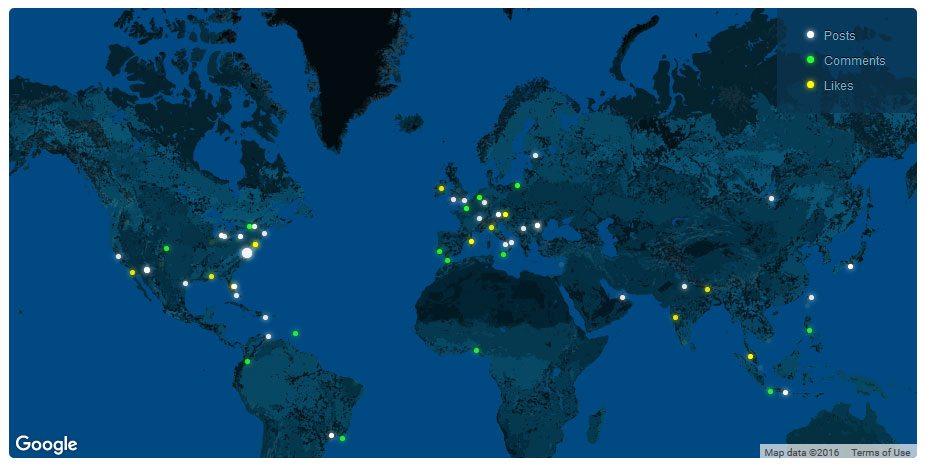When you have a business or a product to sell, it would be easy to assume that all you have to do is get a website online to be able to yield the benefits. However, like anything, if your website doesn’t work in the right way, then it’s unlikely to fulfill its purpose. Many may not consider the performance of the website to be important, but nothing could be further from the truth. Although some people are more patient than others, if your website isn’t up to spec, then you could find that the benefits aren’t as forthcoming as you would like.
This isn’t to say that your website isn’t serving a purpose, but if we’re ignoring any shortfalls, then there can be many ramifications that we’ve not considered. As such, the following ten points explain why you should ensure your website performance is the best it can be.
User Experience Can Be Hindered
We’ve probably all been in a position where we’ve gone to a website only to be met with a blank screen or never-ending spinning circle, and we’ve undoubtedly become frustrated. While there can be instances where we have no control over this, such as the user being in an isolated area with minimum connectivity. However, if it’s because there’s simply too much going on when the user loads a page, then you will find that they have a less-than-desirable experience as a result.
Mobile Is The Present, Not The Future
While it’s likely that there will always be desktop users, the fact remains that more and more people connect with our sites via mobile devices. This was made evident when Google announced that mobile devices were actually generating more online searches than desktop devices back in 2015.
Furthermore, with the recent introduction of Accelerated Mobile Pages (AMP) and mobile-first indexing, it is clear that Google is absolutely obsessed with mobile search. It should also be noted that 65 percent of digital media time is attributed to mobile devices. As such, if your website isn’t able to meet the demands of today’s mobile user, then they are likely to move onto a website that can.
Online Users Have a Short Attention Span
There are a number of different sites that focus on their website speed and user experience to ensure that their visitor’s journey is a pleasurable one. It may surprise you to know that even a few seconds can make all the difference as to whether a user stays active on your site or not. Hence, every effort should be made to ensure that those visiting your website are able to navigate your site with ease, as well as in a timely manner.
Underperforming Websites Can Affect Your Organic Positions
This may be surprising to some, but the truth is that a website that’s not performing as it should can actually fall down the ranks when it comes to their placement within search results. To understand why, we must look at the mission statement of Google. To ensure it remains the strongest search engine, it looks to ensure that those that use the search engine are only met with results that suit their purpose.
Now, in all honesty, the speed of a website isn’t a major factor when it comes to search engine results, but it does remain a factor nonetheless. Only one percent of search queries are affected by the performance of a website, but when you consider how many people use the search engine on a daily basis, this can still be a huge number of people. Google may also crawl your site less as a result.
Slow Websites Can Kill Conversions
To understand just how detrimental website speed can be, we have to look at the figures of people who will abandon your website if it fails to load within three seconds, which is an astonishing 40 percent. This alone is a great number, but to truly understand how severe this can be, we need to look at the following example:
Let’s say your website receives 200,000 views. While this may be something to boast about initially, we need to look at the bigger picture. Taking into account the above statistics, you could potentially lose 80,000 visitors, just because your website didn’t load within the expected timeframe.
You Could Potentially Have a Global Audience
Depending on the goals you have for your website, it could be that your website is being visited by people from all over the world. While many of us take a fast Internet connection for granted, there are those who may have a slower infrastructure, and as such, can experience a slower loading time.
You may think that nothing can be done in this regard, but a combination of a proper content delivery network (CDN) and hosting could be the answer. CDNs are effectively a multitude of servers that deliver content based on the user’s geographical location, meaning that the information is processed faster, and has to go through less ‘hops’ as a result.
Underperforming Websites Can Result in Bad Word-of-Mouth
With so much technical wizardry about in the modern age, it can be easy to forget about more traditional marketing methods, and nothing is more traditional than word-of-mouth. If a user has a positive experience when viewing your website, then it makes sense that they would share such an experience with their friends and family.
However, a bad experience is likely to yield the opposite effect, and it can affect your traffic and conversations as a result. Evidently, there will be times when your website does suffer, but taking a pro-active approach in ensuring your website is performing in the right way will make sure that your reputation isn’t tainted.
Your Bounce Rate Can Increase
A website’s bounce rate is effectively an overview of how many people visited our webpage, and whether they have viewed other pages. What constitutes as a bad bounce rate can differ depending on the goals of your website, but many aim for a range of 26 to 40 percent.
As well as bounce rate being used to tell you how certain people are while interacting with your site, it can also be used to show to potential advertisers just how popular your site is. The reason as to why people don’t interact with your site can be due to a number of reasons. One could be that the content isn’t to their liking, and another one could be that the user-experience is below par.
Raw Traffic Does Not Equal Conversions
Although we all yearn for traffic when it comes to our website, there is a difference between online users visiting a website, and actually sticking around to enjoy the content or making a purchase. As such, we shouldn’t be getting too excited from the numbers alone. This can touch on the bounce rate side of things, in that you should be analyzing what people are doing when on your site, rather than how many have visited.
Time is Money
While not everyone sets up a website with an aim to make money, it makes sense that those who have a service or product to sell are looking for conversions. However, if the user-experience doesn’t live up to expectations, then it’s likely you will lose a number of sales as a result.
To put this into context, you only have to look at snappy retail sites such as eBay and Amazon. Although both companies enjoy a huge turnover, both would lose many sales if the site was slow, for a couple of reasons. The first is what we’ve already advised, in that online users expect a timely response in relation to their request. The second is that they may be put off visiting again. It may seem trivial in the short-term, but those looking to gain affirmation among consumers must meet the needs of online users.
To Conclude
Constructing a website can also be compared to a brick-and-mortar store. If the store is looking shabby and takes forever to find anything, then it’s likely that potential customers will walk out of the shop and never to return. The same can happen in relation to your online presence, so it’s best to smooth out any rough edges sooner rather than later.




1 Comment